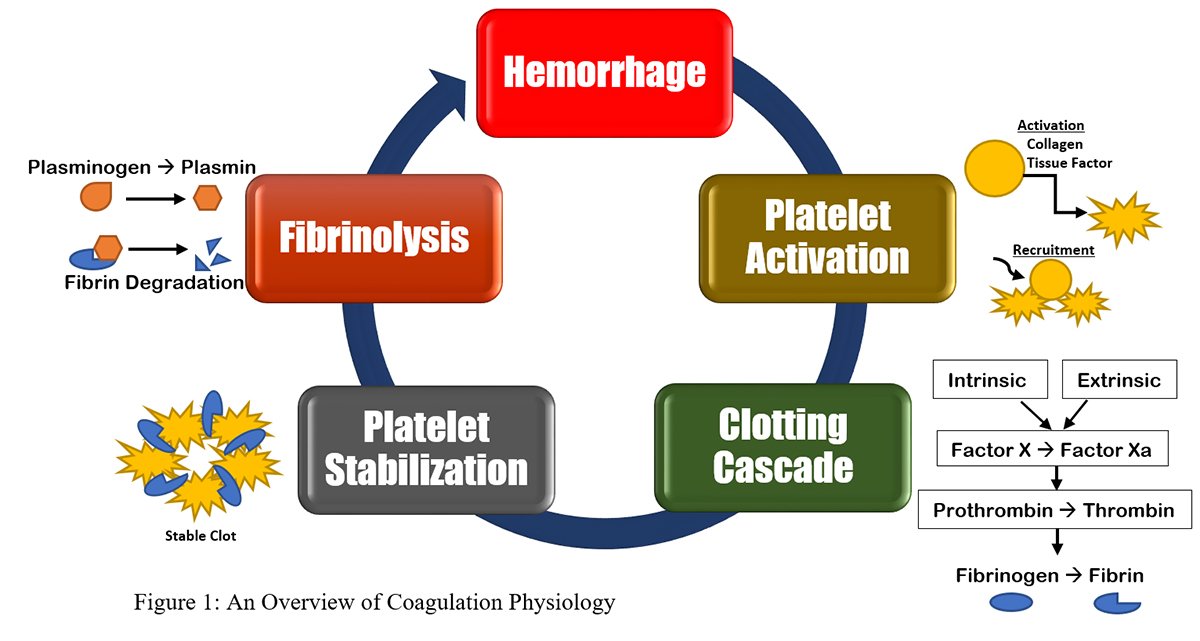About Bleeding Disorders
Clotting
When a person bleeds, the blood clots to stop the bleed. The clotting process, also called coagulation, changes blood from a liquid to a solid state. It takes both blood cells (called platelets) and proteins (called clotting factors) for blood to clot properly. When a person has a bleeding disorder, the blood platelets may not work as they should or the blood doesn’t have enough platelets or clotting factors. This causes a person to bleed for longer periods of time than normal. Blood coagulation is a complex process involving as many as 20 different plasma proteins, known as clotting or coagulation factors. Typically, these factors interact with other chemicals to form a substance called fibrin that stops bleeding. When certain coagulation factors are deficient or missing, the process is impaired.
Bleeding issues can range from mild to severe. Some bleeding disorders are present at birth and are caused by rare inherited disorders. Others develop during certain illnesses (e.g., severe liver disease) or treatments (e.g., the use of anticoagulant drugs or prolonged use of antibiotics). Bleeding disorders can be either inherited or acquired, though the acquired forms often arise from the side effects of certain drugs. Bleeding disorders are manageable, and a person can have a healthy and full life.
As seen on JEMS.
What is a bleeding disorder?
Bleeding disorders are a group of disorders that share the inability to form a proper blood clot. Symptoms include extended bleeding after injury, surgery, trauma, or menstruation. Sometimes the bleeding is spontaneous, without a known or identifiable cause. Improper clotting can be caused by defects in blood components such as platelets and/or clotting proteins, also called clotting factors. The body produces 13 clotting factors. If any of them are defective or deficient, blood clotting is affected; a mild, moderate or severe bleeding disorder can result.
Some bleeding disorders, such as hemophilia, can be inherited or acquired. Others can occur from such conditions as anemia, cirrhosis of the liver, HIV, leukemia, and vitamin K deficiency. They also can result from certain medications that thin the blood, including aspirin, heparin, and warfarin.
Symptoms
Symptoms of a bleeding disorder include:
Bleeding into joints, muscles and soft tissues
Excessive bruising
Prolonged, heavy menstrual periods (menorrhagia)
Unexplained nosebleeds
Extended bleeding after minor cuts, blood draws or vaccinations, minor surgery or dental procedures
Treatment
Treatment for bleeding disorders varies, depending on the condition and its severity. For some bleeding disorders, there are clotting factor concentrates that can be infused prophylactically or on-demand at home to prevent or treat bleeds. Some women with bleeding disorders may use hormone therapy (birth control pills) to manage heavy periods. For other bleeding disorders, there are topical products, nasal sprays, and fresh frozen plasma, which is administered in a hospital setting.
What is a platelet disorder?
Platelets are tiny, irregularly shaped blood cell pieces (called fragments) that play an important role in blood clotting. When a person has a low number of platelets, too many platelets, or their platelets don’t work the way they should, they have a platelet disorder. People with platelet disorders take longer to stop bleeding.
When an injury occurs and a blood clot is needed, the platelets become sticky and help plug the site of the injury. They attract other proteins needed in the clotting process, and they help form a stable clot. There are several ways that platelets may not work properly, thus resulting in platelet disorders. Some platelet disorders are not fully understood and may result in a diagnosis of an "unspecified platelet disorder."
Learn about Factor Deficiencies
Click on the factor numbers or platelet disorders to learn about different bleeding and platelet disorders.
Progress
In the 1980s and 1990s, the bleeding disorders community suffered devastating losses due to the contamination of factor concentrates with HIV and Hepatitis C. Our small community was robbed of an entire generation. Today, many families are grieving the loss of loved ones. Thankfully, the younger generation of children with bleeding disorders has a different future with safe and improved treatments for Hemophilia and Von Willebrand disease. Today, those born and diagnosed with a bleeding disorder are expected to have the same life expectancy as those without a bleeding disorder. Due to medical advances, families can now treat their conditions at home.
Despite these advances, however, Hemophilia and Von Willebrand disease continue to be serious and potentially life-threatening conditions that significantly impact patients and their families. Head bleeds can cause irreversible damage, while target joints remain a major concern. Inhibitors, a complication of hemophilia that often results in bleeding that is difficult to control, are still not well understood. Moreover, treatment of bleeding disorders usually means IV infusions. Experiencing regular needle sticks can be traumatic as can the need to master complicated medical techniques. The need to regularly interact with and advocate for oneself with medical professionals, insurance companies, and schools, can cause profound psychosocial stresses. Adding to that strain can be medical costs. Factor concentrates are one of the most expensive medications on the market typically costing $350,000 per patient per year. As a result, insurance coverage is a major concern for families, especially in today’s changing healthcare environment. Finally, living in an era of tremendous scientific research brings excitement, opportunities, and hope for the future of our hemophilia community. However, the rapidly changing medical landscape can also bring with it questions and confusion about the best course of treatment for each family.
For additional information, please visit
Much of this information is courtesy of hemophilia.org.


















